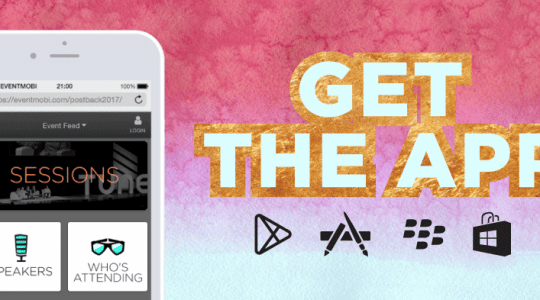 This is an interview with Brian Long, CEO and Co-Founder of TapCommerce. He is scheduled to be a panelist at our upcoming Postback event, July 17-18.
This is an interview with Brian Long, CEO and Co-Founder of TapCommerce. He is scheduled to be a panelist at our upcoming Postback event, July 17-18.
To start things off, tell us how you fit in the mobile marketing industry?
At TapCommerce, we focus on mobile retargeting and app re-engagement. Our goal is to help brands retain their mobile audiences and keep users continually engaged with apps beyond the install.
 We work with leading e-commerce, travel, lifestyle, and gaming apps on the advertiser side, and integrate with mobile analytics providers, such as MobileAppTracking, enabling us to track in-app behavior and engagement. On the supply side, we’re plugged into all the major global ad exchanges and receive over 15 billion bid requests for in-app mobile advertising daily. Once a retargeted ad is served within a publisher app, a click-through redirects users back into the advertiser’s app to complete a purchase or action.
We work with leading e-commerce, travel, lifestyle, and gaming apps on the advertiser side, and integrate with mobile analytics providers, such as MobileAppTracking, enabling us to track in-app behavior and engagement. On the supply side, we’re plugged into all the major global ad exchanges and receive over 15 billion bid requests for in-app mobile advertising daily. Once a retargeted ad is served within a publisher app, a click-through redirects users back into the advertiser’s app to complete a purchase or action.
Why are retargeting and re-engagement campaigns important to mobile app marketers?
For quite some time, mobile performance marketing has largely been centered around driving installs of apps and acquiring brand new users. However, marketers are becoming increasingly frustrated with rising cost-per-install rates and decreased user engagement after download. The attention is now shifting away from acquisition and toward retention. You already invested time and money in acquiring those users and in creating a fantastic in-app user experience—so how do you keep them coming back to engage with your app while simultaneously driving incremental revenue?
How have you seen mobile re-engagement campaigns evolve over time?
Since the launch of the two major app stores in 2008, marketers have used email as a channel to promote their apps. Soon after, push notifications entered the mobile scene and made it possible to trigger text-based updates directly on the user’s screen.
While email and push notifications should still be incorporated into the re-engagement mix, only a small percentage of users still opt-in for push notifications, and an even smaller group will willingly provide an email address. The next step in the evolution of mobile re-engagement campaigns is retargeted in-app advertising. While retargeting itself isn’t a new idea—it works very well on the web, thanks to the third-party cookie—it is entirely different in the mobile environment.
Are there specific types of retargeting campaigns that you’ve found to monetize especially well?
The key to successful retargeting campaigns is to be as personalized and timely as possible. Segmentation is critical, since it allows you to customize your ad creative and calls to action to resonate with each member of your audience. Marketers can take real-time segmentation one step further by using in-app behavioral data to feed dynamic ads featuring the exact products a user has already browsed. The more relevant the ad is, the more likely the user is to click-through and, ultimately, make a purchase.
Deeplinking, or launching a native mobile app via a link, is another very powerful tool that lets users easily navigate between different mobile applications. For example, a tap on a retargeted in-app ad could redirect the user directly to that product page or the user’s shopping cart, rather than the default home screen of the app.
For those interested in learning more about deeplinking, one resource to check out is mobiledeeplinking.org. The Mobile Deeplinking project is an open source, collaborative effort between TapCommerce, MobileAppTracking, and other industry leaders to help mobile app publishers create seamless cross-media user experiences.
Do you have any recommendations for finding the right balance between retargeting campaigns and avoiding message fatigue?
It’s all about relevancy for the consumer—delivering a thoughtful message from a brand they love, rather than showing the same repetitive ad over and over again. For this reason, frequency capping on impressions and clicks should be used to limit repetition. It’s also important to keep the actual ad creative fresh. One easy way to do this is by using dynamic creative, so the ad populates with the product the user most recently viewed within the app.
What gets you excited about the future of mobile marketing?
Consumers have just started transacting on their mobile phones—first with games and music using in-app purchases, and now with flights, hotels, e-commerce, dating, food, and a multitude of other industries. As transactions continue to shift over to the smartphone, I believe there is a huge opportunity to build efficient marketing programs to continue to drive mobile commerce.
In many ways, what we’re seeing now is much like the advent of online purchasing in the early 2000s on the web. Today, the majority of display advertising on the web is spent on performance-based campaigns to drive transactions, and I believe that’s where we’re now headed with mobile.
This year’s Postback event will be held July 17th & 18th in Seattle, WA. Featuring keynote addresses from Twitter and Google, 10 panel sessions with discussion from 25+ industry experts, and training for HasOffers and MobileAppTracking products, Postback is a can’t miss event for all serious marketers. The event also includes a rooftop happy hour, boat cruise along the Seattle waterfront, and a private concert, giving you plenty of opportunity to connect with other professionals in the industry. To register or learn more, visit the Postback website.
Author
Becky is the Senior Content Marketing Manager at TUNE. Before TUNE, she led a variety of marketing and communications projects at San Francisco startups. Becky received her bachelor's degree in English from Wake Forest University. After living nearly a decade in San Francisco and Seattle, she has returned to her home of Charleston, SC, where you can find her enjoying the sun and salt water with her family.




Leave a Reply
You must be logged in to post a comment.